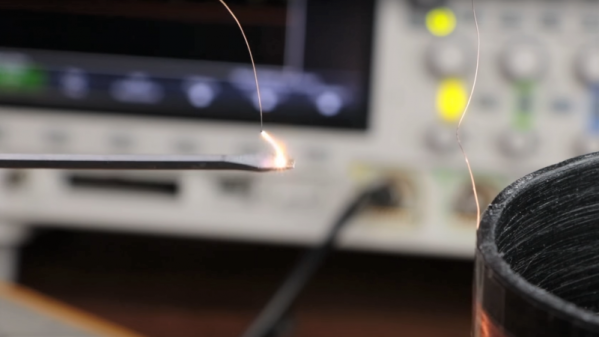Like so many of the projects we feature, this one started with a cheap eBay module purchase. In this case, it was a little Tesla coil that made decent sized arcs but wasn’t quite good enough. The result was a super-sized solid state Tesla coil with better results and room to grow.
As [GreatScott!] discovered, the little eBay Tesla coil has a pretty neat design. The exciter is a Slayer circuit, a super simple one-transistor design. His reverse engineering revealed that the primary coil is simply a loop trace on the PCB under the secondary coil. Sadly, his attempt to replace the primary and reproduce the Slayer exciter resulted in anemic performance. What’s a hacker to do in that case except build a bigger coil? Much bigger — like “build your own winding jig” bigger. Twelve hundred secondary turns and an appropriately menacing-looking primary later, the results were — still anemic. It turns out the Slayer is just not up to the task. He turned to an inverter circuit that was previously used in a wireless energy transfer circuit, and we finally get to see a little of the Tesla coil magic. But wait! There’s more to come, as future videos will tweak the circuit and optimize the coil for better performance.
It’s no surprise that Tesla coils are a popular project around here, especially the musical kinds, from the tiny to the large. Music doesn’t seem to be on [GreatScott!]’s mind, though, and we’ll be watching with interest to see where he takes this build.


















